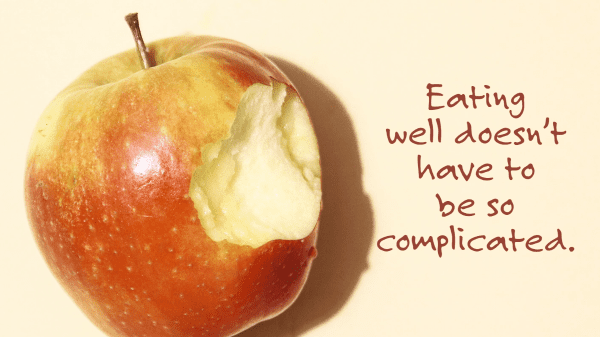
Consumers have spent a lot of time preparing their own meals over the past year and a half, and the latest sales figures suggest this is a trend that’s not slowing anytime soon.
Meals prepared at home are at an all-time high—peaking, of course, during the spring and early summer of 2020.
And, while we did see some return to eating away from the home when Covid numbers slowed in June and July, that downward trend reversed in August and September.
But what are consumers making at home?
I’m sure many of us have this idyllic vision of a stock pot simmering with warm vegetable soup, or perhaps a flavorful homemade salad to go with grilled chicken and a side of roast potatoes.
The reality, I fear, is harried parents throwing premade chicken nuggets in an air fryer and maybe, hopefully, serving them with a bagged salad kit. Or an empty-nest couple with some pork chops and mac and cheese.
The age-old joke about the couple who can’t decide where to eat is magnified when it comes to meal planning at home. Add an alarming lack of either time or skill in the kitchen, and we’ve got a recipe for food fatigue and a nutritional disaster.
Nobody knows what they want to eat anymore, and we’ve got to find new ways to inspire them.
I hit a point this summer reading comment after comment in social media groups dedicated to meal preparation where I feel like we can’t be too easy, or too basic, with meal solutions.
People want fast, healthy, inexpensive, easy, nutritious, and flavorful food. The reality is that this perfect combination isn’t achievable for most, based on budget or time constraints, and an underappreciation for how abysmal the average consumer’s cooking skills truly are.
I’ve recently come to the conclusion that it’s impossible to be too simplistic with food information, and we in the produce business often take that for granted.
Teaching consumers how to pick a ripe avocado isn’t Food 101. That’s an advanced course. I’m talking about “How to cut an apple,” or “How to microwave a potato.”
There are people turning away from fresh produce in favor of dump-and-go meals like frozen chicken nuggets and microwaveable mac n’ cheese because it really is too complicated for them to plan and prepare fresh foods.
I feel like we need to give consumers permission to aspire to less complicated meals. Not everyone wants to learn how to make their own bolognese, and that’s OK.
We need to let them know a good dinner is as easy as a rotisserie chicken, a bag of salad, and a clamshell of blueberries. Make lunch simple again with a PB&J, carrots, and an apple. Breakfast can be a bowl of Cheerios with a banana.
I’m all for the excitement of specialty produce, or a scratch-made holiday feast, but we need to meet consumers where they are. And right now, that’s at the basics.
Consumers have spent a lot of time preparing their own meals over the past year and a half, and the latest sales figures suggest this is a trend that’s not slowing anytime soon.
Meals prepared at home are at an all-time high—peaking, of course, during the spring and early summer of 2020.
And, while we did see some return to eating away from the home when Covid numbers slowed in June and July, that downward trend reversed in August and September.
But what are consumers making at home?
I’m sure many of us have this idyllic vision of a stock pot simmering with warm vegetable soup, or perhaps a flavorful homemade salad to go with grilled chicken and a side of roast potatoes.
The reality, I fear, is harried parents throwing premade chicken nuggets in an air fryer and maybe, hopefully, serving them with a bagged salad kit. Or an empty-nest couple with some pork chops and mac and cheese.
The age-old joke about the couple who can’t decide where to eat is magnified when it comes to meal planning at home. Add an alarming lack of either time or skill in the kitchen, and we’ve got a recipe for food fatigue and a nutritional disaster.
Nobody knows what they want to eat anymore, and we’ve got to find new ways to inspire them.
I hit a point this summer reading comment after comment in social media groups dedicated to meal preparation where I feel like we can’t be too easy, or too basic, with meal solutions.
People want fast, healthy, inexpensive, easy, nutritious, and flavorful food. The reality is that this perfect combination isn’t achievable for most, based on budget or time constraints, and an underappreciation for how abysmal the average consumer’s cooking skills truly are.
I’ve recently come to the conclusion that it’s impossible to be too simplistic with food information, and we in the produce business often take that for granted.
Teaching consumers how to pick a ripe avocado isn’t Food 101. That’s an advanced course. I’m talking about “How to cut an apple,” or “How to microwave a potato.”
There are people turning away from fresh produce in favor of dump-and-go meals like frozen chicken nuggets and microwaveable mac n’ cheese because it really is too complicated for them to plan and prepare fresh foods.
I feel like we need to give consumers permission to aspire to less complicated meals. Not everyone wants to learn how to make their own bolognese, and that’s OK.
We need to let them know a good dinner is as easy as a rotisserie chicken, a bag of salad, and a clamshell of blueberries. Make lunch simple again with a PB&J, carrots, and an apple. Breakfast can be a bowl of Cheerios with a banana.
I’m all for the excitement of specialty produce, or a scratch-made holiday feast, but we need to meet consumers where they are. And right now, that’s at the basics.



